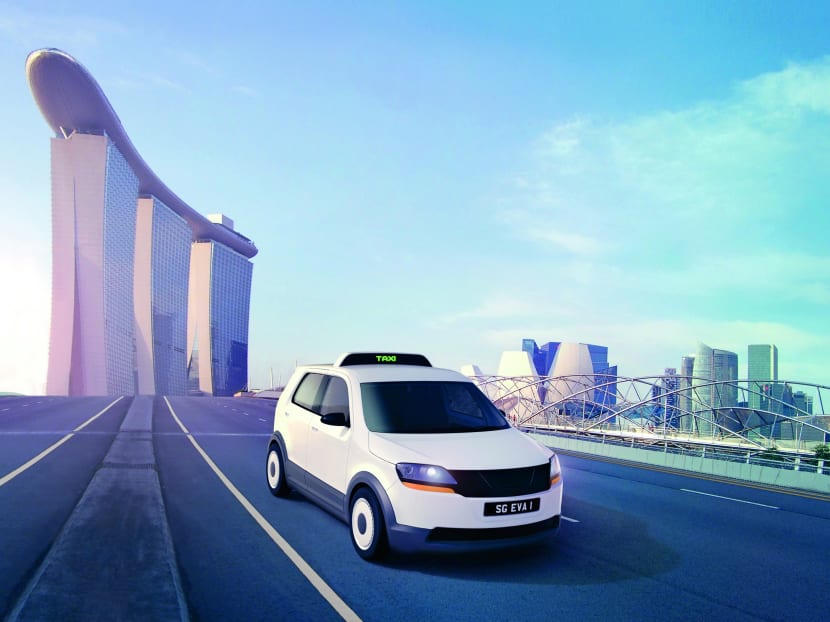Electric taxi prototype launched at motor show
SINGAPORE — Commuters here could be flagging down taxis powered purely by electricity in a few years if a prototype designed and built by engineers and scientists at TUM CREATE — a research institution started by the Technische Universitat Munchen (or the Technical University of Munich) and Nanyang Technological University (NTU) — is developed further and enters production.
SINGAPORE — Commuters here could be flagging down taxis powered purely by electricity in a few years if a prototype designed and built by engineers and scientists at TUM CREATE — a research institution started by the Technische Universitat Munchen (or the Technical University of Munich) and Nanyang Technological University (NTU) — is developed further and enters production.
The prototype, codenamed EVA, was the brainchild of a team of 30 TUM CREATE engineers and scientists and took two years to come to fruition. It was launched today (Nov 21) at the 43rd Tokyo Motor Show.
Explaining why the team chose to build an electric taxi, Professor Harry Hoster, TUM CREATE’s Scientific Director, said: “Taxis (represent) 3 per cent of our registered vehicles, but they are responsible for 15 per cent of the (total) mileage (travelled) here in Singapore.”
“So, if you invest into something still expensive, like the battery for an electric vehicle, you’d better make sure that it’s really used and not only parked — and this is best for a taxi,” he added.
EVA — whose outer shell is made of carbon fibre, to reduce energy consumption — features a battery system designed to allow the cab to cover 200km after just 15 minutes of recharging, an “industry benchmark”. This figure is based on data amassed by TUM CREATE researchers on the driving patterns of Singapore taxis.
Other features include an individualised overhead air-conditioning system that ensures the comfort of passengers, such that only occupied areas of the cab are cooled — compared to cooling the entire cab, which raises energy consumption — and innovative seats with fans underneath them that remove moisture and heat from the seats’ surface.
The front passenger seat also folds forward and converts into a back-facing child seat for young passengers between 9 months and 3 years of age. This means parents would no longer need to bring child seats for their young ones when riding in the cab.
Passengers can also access and control the cab’s air-conditioning and audio settings wirelessly on their mobile devices via an interactive infotainment system.
TUM CREATE currently has no immediate plans to take the electric taxi into production. Prof Hoster said the team has been in touch with several taxi operators here, such as SMRT and ComfortDelGro, but no definitive plans have been drawn up.
“It is still a few years down the road (to the start of production). That is the normal development process,” said Prof Hoster, when asked when he expects the electric taxi to be rolled out.
Infrastructure is another consideration, as “new types of charging stations” — distinct from those currently offered in Singapore by technology company Bosch as part of the Electric Vehicle test-bed programme — would be required.
Still, Prof Hoster said: “Already, for the liquid-gas-driven taxis, they were used to having to go to certain places (to refuel) ... For charging stations, you’re even more flexible because you need less infrastructure as compared to a gas station.”









